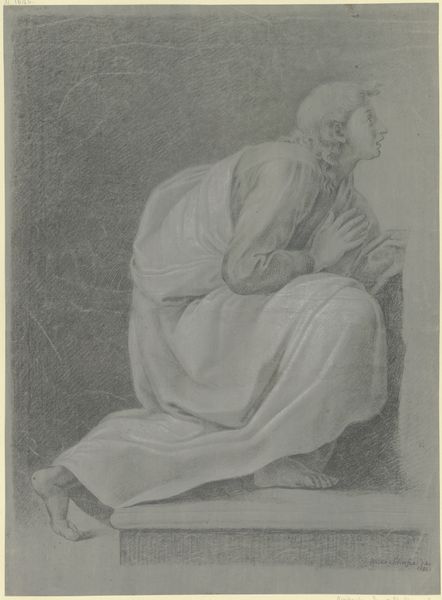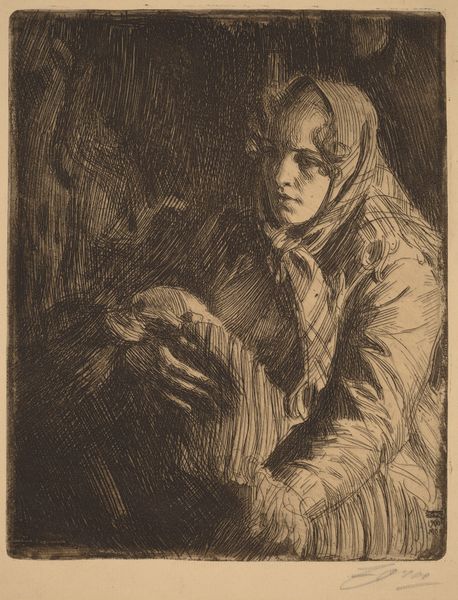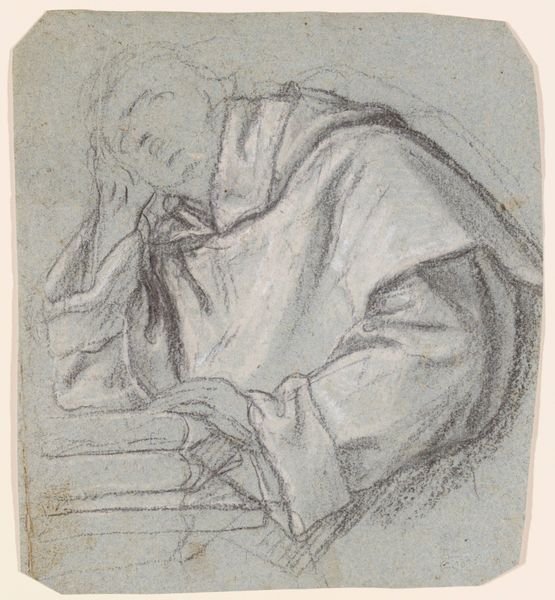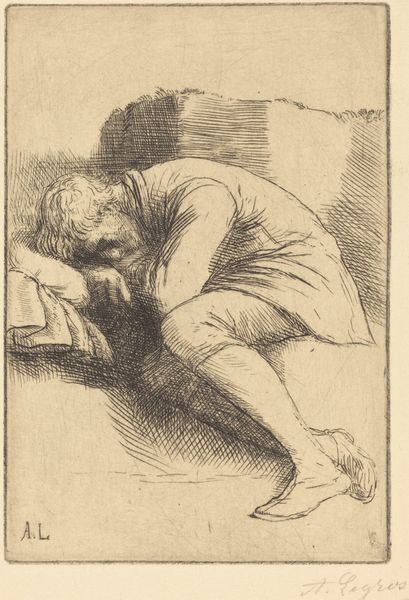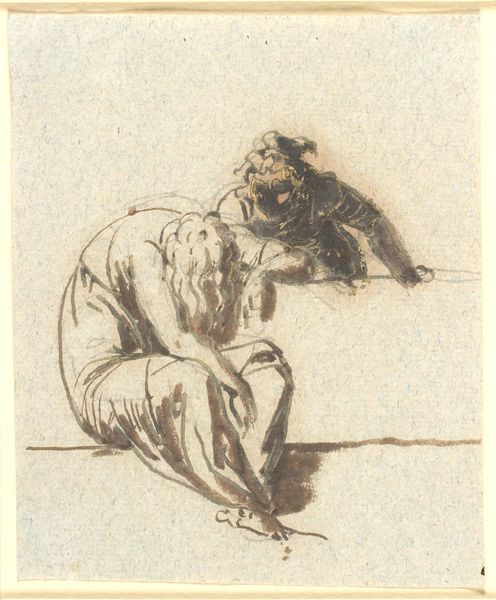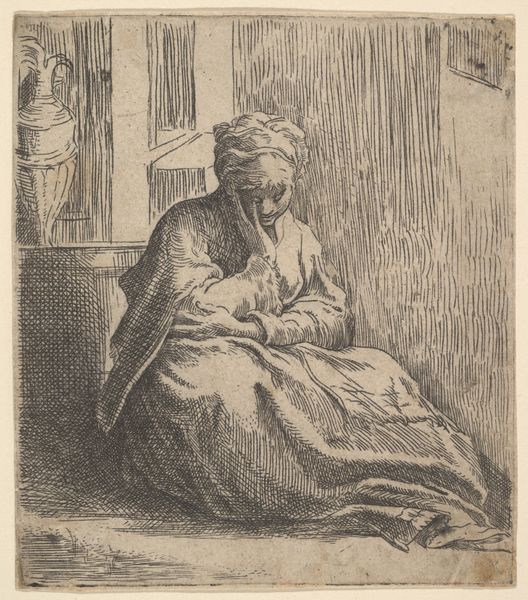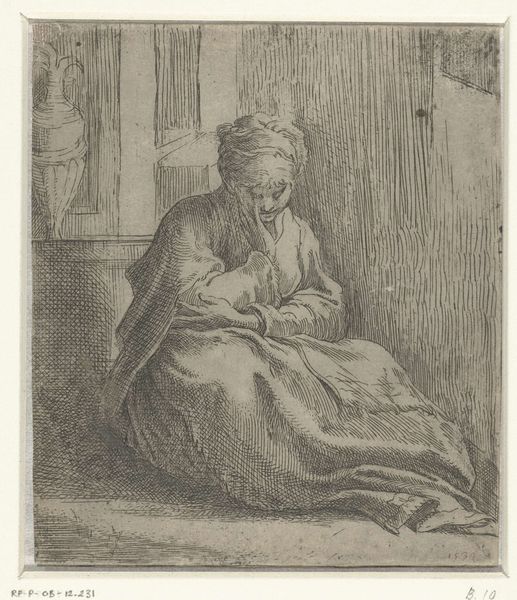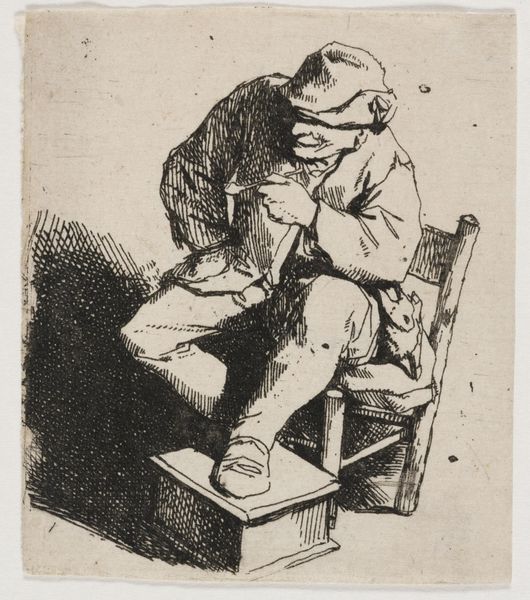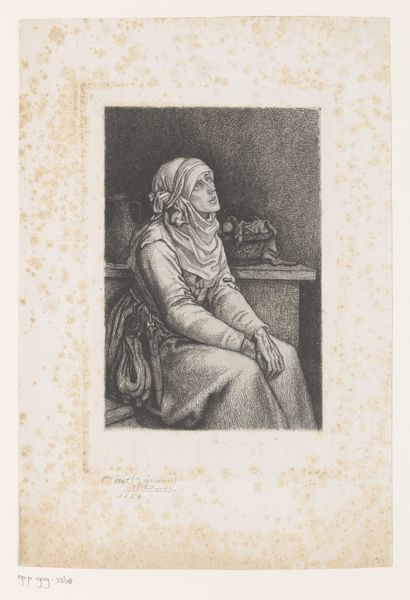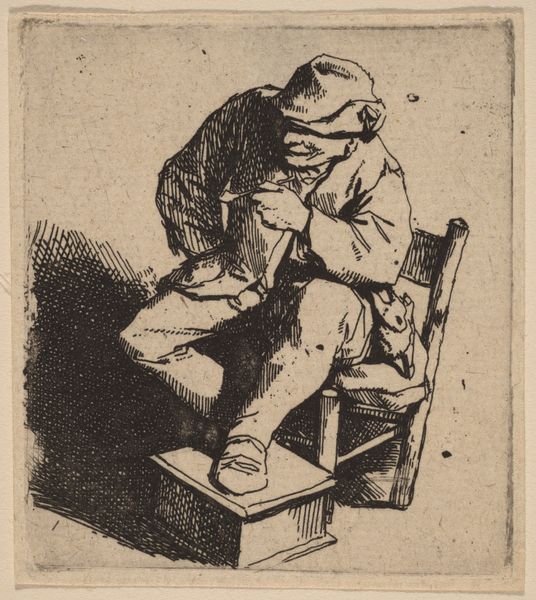
drawing, graphite
#
pencil drawn
#
drawing
#
light pencil work
#
baroque
#
pencil sketch
#
pencil drawing
#
graphite
#
portrait drawing
#
pencil work
#
realism
Dimensions: height 393 mm, width 280 mm
Copyright: Rijks Museum: Open Domain
Editor: This is "Zittende man," a graphite drawing by Jean-Charles François, created sometime between 1727 and 1769. It has a quiet, contemplative mood to me, perhaps even a touch melancholic. The stark contrast emphasizes the subject's pose and vulnerability. How do you interpret this work through a more critical lens? Curator: The beauty resides, firstly, in its simplicity. Note the artist’s strategic use of light and shadow. The areas of light model the form, creating a three-dimensional presence on a two-dimensional surface, while the shadow creates depth and emphasizes the somber mood that you keenly observed. Notice how the artist employed a varied application of graphite: soft blending versus hatching? Editor: Yes, I see how those contrasting techniques are applied. What strikes me now is that the texture, achieved through different pencil strokes, becomes almost as important as the subject matter itself. How might we interpret these varied strokes from a formalist point of view? Curator: Excellent question! From my point of view, they are integral to the image, the artist invites us to analyze the marks on the page as much as the seated figure depicted. The drawing’s energy resides not only in representation but also in the materiality of the graphite itself, its capacity to render subtle gradations and tactile impressions. In your eyes, how does this emphasis impact our understanding of the piece? Editor: I now appreciate that the medium and technique contribute so significantly to the drawing's expressiveness. Curator: Precisely! The power of observation refined into purposeful marks, making the unseen, seen.
Comments
No comments
Be the first to comment and join the conversation on the ultimate creative platform.
